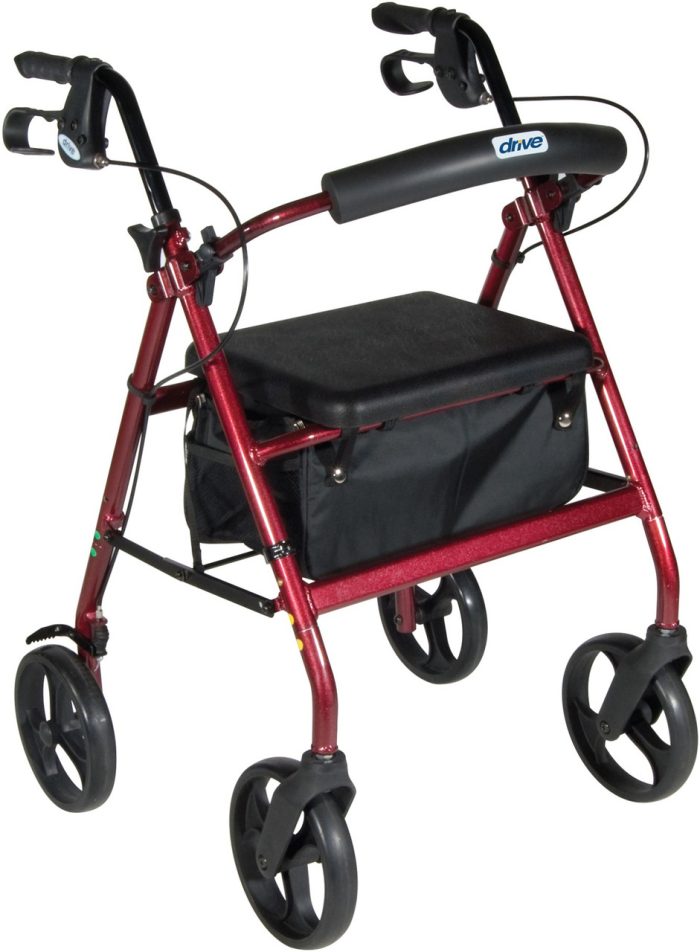What’s a Walker?
A walker is a piece of mobility equipment that can help a person who has trouble keeping their balance or staying stable. People who have had orthopaedic surgery and can’t put their full weight on one or both legs may find that using a walker is helpful while they are healing. Walkers offer more support than a single cane because they often have more points of contact with the ground, they offer support on both sides of the body, and both hands are used to move the walker forward.
Taylor Galmarini, a physical therapist in Atlanta, says that people who are having trouble keeping their balance should see a mobility expert, like a physical therapist. Movement specialists are trained to look at walking problems and suggest the best aid based on the person’s size, walking ability, balance, strength, and endurance. These suggestions are made based on how the person walks, how well they balance, how strong they are, and how big they are.
She sees a lot of older people struggling with walkers that they or their family members bought without first asking an expert. Since she works with old people, she sees this a lot. To walk safely with a walker, you need to learn the skills you need, and it is very important to do so. She goes on to say that buying a walker that doesn’t fit right or isn’t right for the user could cause more problems than it solves because it puts too much stress on the user’s wrists and shoulders.
Different kinds of walkers
Standard walkers, walkers with wheels, and rollators are the three main types of walkers.
Standard Walkers
A standard walker is the most common type of walker and is usually seen in medical or rehabilitation settings. Most of the time, it’s made of silver metal with grey grips on each side. The standard walker doesn’t have wheels, so each step requires picking it up and moving it forward. Because of this, this kind of walker usually needs more energy. In fact, a Canadian study that compared standard walkers to rollators found that people who used standard walkers had to use more energy and couldn’t walk as far as those who used rollators.
Wheeled Walkers
A wheeled walker or rolling walker is just a regular walker that has wheels added to it. Wheeled walkers can have two wheels or four wheels at the front. Two-wheeled walkers often have two tennis balls or walker slides attached to the bottom of the back legs. These attachments make it easy for the walker to roll along. Most of a rolling walker’s wheels can go either forward or backward, but the front wheels can only go in one direction. The walker needs to be raised so that the user has room to move laterally or turn around when they need to do either of those things.
Rollators are a type of walker that can have three or four wheels, depending on the model. Because the wheels on some rollators are omni-directional, which means they can move in any direction, the person using it doesn’t have to lift it to turn it around or move to the side. Rollators can come with seats, which is a big help for people who get tired quickly. Wheeled walkers have a bigger social stigma than rollators, which come in different colours and styles. Some people choose rollators over wheeled walkers for this reason.
How much does insurance pay for a walker?
With a few big exceptions, both Medicare and private insurance will pay for all or part of the cost of a walker, but there are a few big ones. One thing that is different is Medicare. Some private insurance plans will pay for a standard walker, but not a rollator. The cost of getting a rollator will be paid for by someone else if a physical therapist or doctor can show that using a rollator is medically necessary. Before you spend money on a walker for yourself, you should check with your insurance company to see what your coverage includes. This will make sure you are ready for anything.
Galmarini says that people who need walkers but don’t have insurance that covers them shouldn’t let the cost stop them from using them. There are opportunities in the form of grants, scholarships, and gifts of used equipment. When patients go to a therapy clinic for treatment, they can also get help finding places where they can buy the medical equipment they need.
The vast majority of health insurance plans, including Medicare, will only pay for mobility equipment once every two or three years. If you’re likely to need more expensive mobility equipment soon, it might be best to get a walker now, either with help from a loan or with your own money.

 1-833-207-3433
1-833-207-3433
